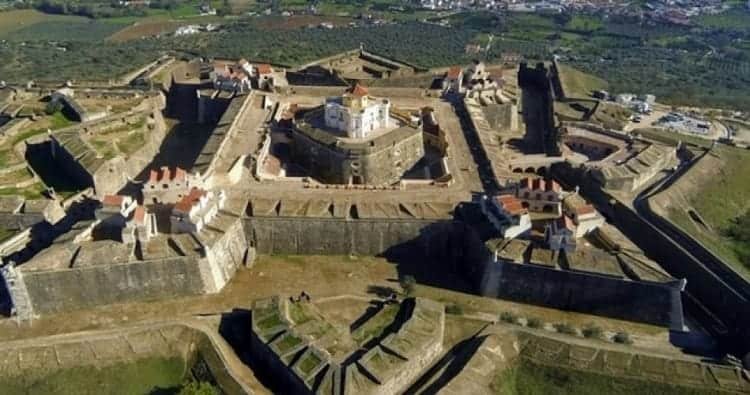It is located almost on the border with Spain, in the Portuguese city of Elvas. You can even see the Spanish city of Badajoz when you go up to the fort, and not only that, because when you go up to the fort, you have a 360º field of vision. O Our Lady of Grace Fort, inspired by Dutch military architecture, was built with the aim of planning defenses against enemy troops and for military training, in 1763, by order of Marquês do Pombal. But it was only 29 years later, in 1792, that the fort was completed.

To enter the fort you need to pass through a drawbridge and a beautiful baroque-style gate. The place was built with the capacity to accommodate more than 1500 men, which shows its size and grandeur and also has large and robust walls and walls capable of resisting any cannon and artillery attack. To demonstrate its grandeur, the fortification complex in the area occupies more than 179 hectares.

After we cross the bridge and the gate, well then it feels like we are transported hundreds of years into the past. There we can let ourselves be carried away by the construction and pay attention to the details of the architecture and the ingenious accessories and “tricks” to defend – and attack – invaders. What sounds ironic is that the fort was never used for its initial function, as there were no further conflicts, thank goodness. What remained, to the delight of visitors, is a grandiose, secular and robust work that deserves to be visited, despite the distance from major centers.

And distance does not seem to be a factor that prevents visits: Forte da Graça has been visited by more than 100,000 people since it reopened in 2015, after major recovery and restoration work. It is located in the city of Elvas, which is at a distance of just over 210 km from the country's capital and just 22 km from the Spanish city of Badajoz, which is worth a visit.
The Fort of Nossa Senhora da Graça - one of the most perfect works of Dutch military architecture - was ordered to be built by Marquês de Pombal, who in 1763 called Wilhelm, Count of Schaumbourg-Lippe, to Portugal to reorganize the Portuguese army and plan the construction against enemy troops. The work began in 1763 and took 29 years to be completed, using a workforce of six thousand men and four thousand animals.